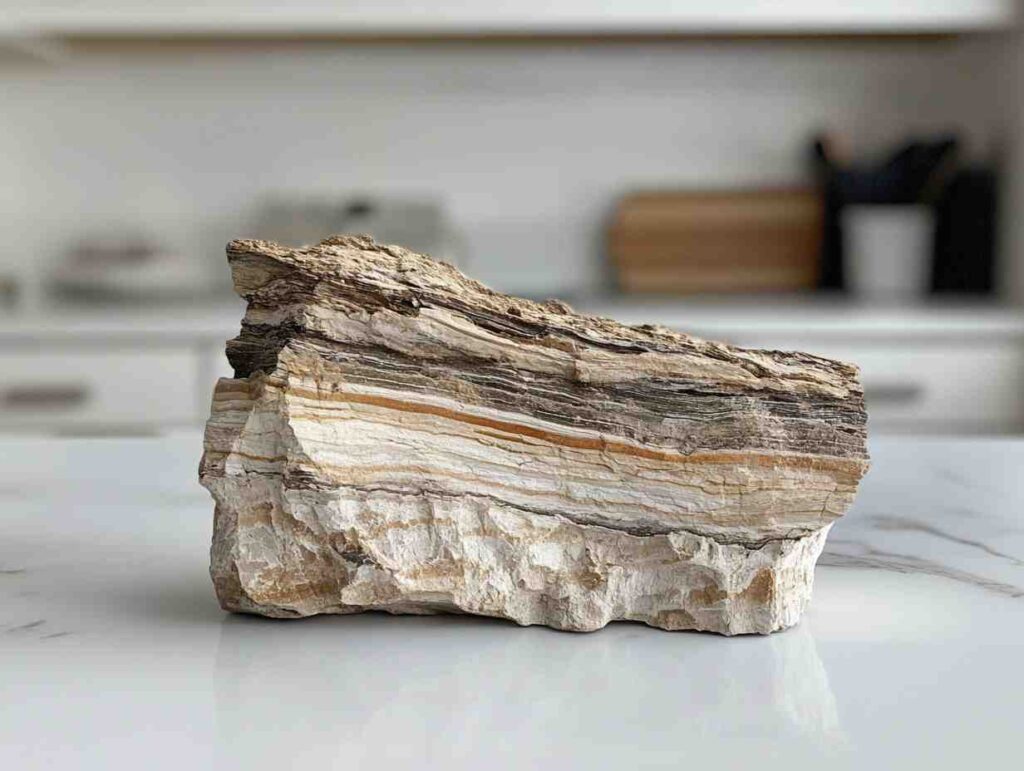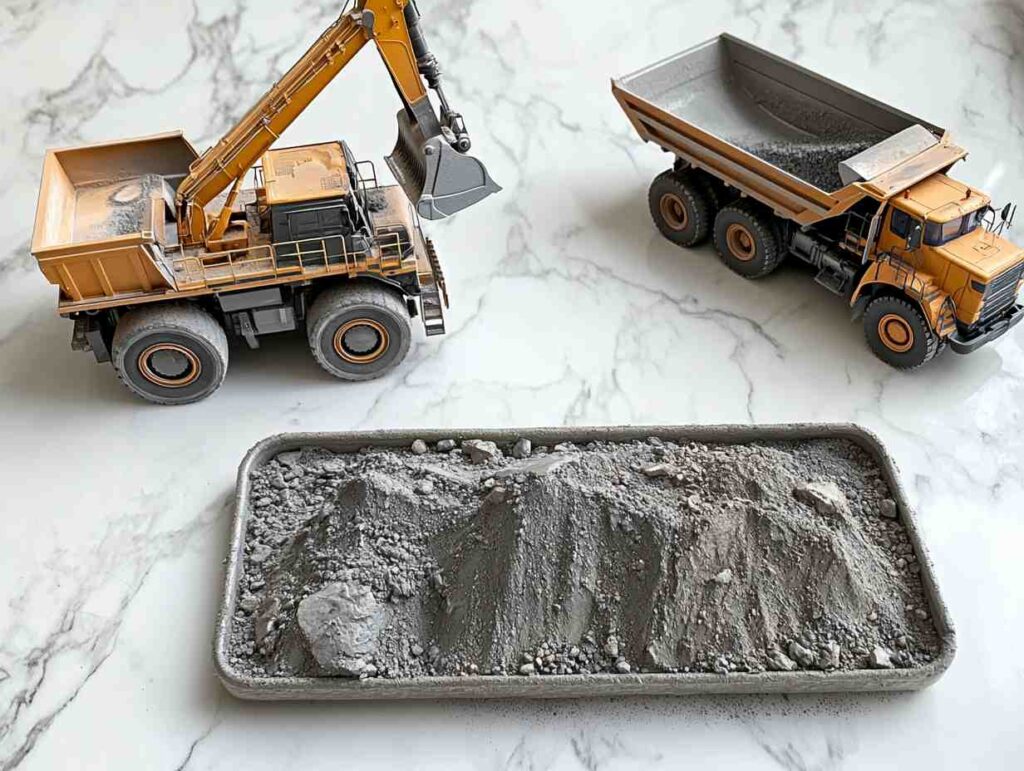The term “dip” can be confusing, especially when it comes to layered formations. What is the dip of layers is a question that arises in various fields, from geology to cooking. Therefore, understanding this concept thoroughly is crucial. Let’s delve into a detailed explanation. Dip essentially describes the angle of inclination of a layered surface. This is relative to a horizontal plane. However, the specifics vary depending on the context. So, what is the dip of layers exactly? Let’s explore.
Defining Dip in Different Contexts
The concept of dip appears across multiple disciplines. In geology, dip describes the angle at which a rock layer tilts. This is a vital piece of information for understanding geological structures. In mining, dip also refers to the slope of ore bodies. Similarly, in other fields, the angle of layered materials is often a key detail. Therefore, understanding the context is essential.
Geological Dip Explained
In geology, dip is a measure of the maximum angle. This angle occurs between a tilted layer. It also occurs with a horizontal plane. Dip is always measured perpendicular to the strike. Strike, on the other hand, is the direction of a horizontal line. This line is on the inclined layer. It is often expressed in degrees. It can also be expressed as a direction with a number. For example, a dip might be described as 30° southeast. Thus, geological dip is critical for mapping and analysis.
Dip in Mining Operations
In the mining industry, understanding dip is equally important. Ore bodies are rarely horizontal. So, they often have an incline or dip. Miners need to know the angle of the ore body for efficient and safe extraction. Furthermore, dip influences the design of mine shafts and tunnels. Therefore, it’s a critical parameter in mine planning. Mining dip informs how to best access and extract resources.
Layered Dishes and Culinary Dip
Even in the culinary world, the concept of “layers” can imply an angle or dip. Consider a layered dip. For instance, a seven-layer dip. In this context, dip refers to the varying thickness and incline of each layer. Culinary dip highlights how the layers stack and interact visually. Although not a literal angle, it’s related to our topic of discussion. It also relates to the overall presentation.
Dip as an Angle Measurement in Geology
What is the dip of layers in a geological context? It is primarily an angle measurement. This measurement helps geologists. It helps them understand how rock layers are arranged. Furthermore, this knowledge is vital for understanding the earth’s history. The angle helps to interpret tectonic activity. Moreover, it helps in assessing the structural integrity of rock formations.
How Geologists Measure Dip

Measuring dip requires using specific tools and techniques. A Brunton compass is a common tool. It is for determining both the strike and dip. Geologists place the compass on the exposed surface of the rock layer. The compass measures the angle between the layer and the horizontal plane. Additionally, they record the direction of the dip. Therefore, precise measurements are essential for accurate geological maps.
Importance of Dip in Geological Mapping
Dip measurements are crucial for creating geological maps. These maps show the distribution of rock layers. In addition, they display the structure of the earth’s crust. The information helps to identify potential locations of resources, such as water or minerals. Moreover, it aids in assessing areas prone to landslides or earthquakes. Geological mapping relies heavily on accurate dip information.
Dip in the Context of Mining and Resource Extraction
In mining, the concept of dip is a critical parameter for resource extraction. Mining dip indicates the angle at which an ore body or seam is inclined within the earth. Furthermore, knowing the dip helps miners to develop effective mining strategies. This allows for better planning and resource optimization. Consequently, this leads to more efficient and safer operations.
Planning Mine Operations with Dip Information
Dip information plays a vital role in the planning phase of mining operations. The angle of the ore body affects the design of tunnels, shafts, and extraction methods. For instance, a steeply dipping ore body might require different techniques than a gently dipping one. Therefore, miners use this data to ensure the safety of the workforce. It also maximizes resource recovery. Mine planning is a complex process that needs accurate dip data.
Impact of Dip on Mining Costs and Efficiency

The dip of an ore body can greatly impact the cost and efficiency of mining. Steeply dipping bodies often require more complex extraction methods. Additionally, this can increase operational costs. Gently dipping ore bodies are usually easier to extract. This results in lower costs and higher production rates. Understanding the dip helps to predict these challenges. Furthermore, it helps in optimizing resource extraction.
Dip in Layered Foods: A Visual Perspective
Although not a literal angle, the concept of dip relates to layered foods. In culinary terms, dip often refers to a dish with distinct layers. These layers are stacked in a way. This is somewhat similar to how geological layers are structured. Even though it’s not an exact angle, we can still appreciate the visual depth and complexity. This is similar to a geological dip.
Examples of Layered Food Dip
Many dishes demonstrate the concept of layered dip. A classic example is a seven-layer dip. This usually features refried beans, guacamole, sour cream, salsa, cheese, and olives. Each layer is distinct. It contributes to the overall flavor and presentation. Similarly, layered salads and desserts show a visual stacking of ingredients. These food creations can show visual dip. Therefore, the layering creates depth.
Visual and Textural Aspects of Layered Dip
The appearance of layered dip adds to the appeal of the dish. The contrast in colors and textures makes it visually appealing. Furthermore, the combination of flavors from different layers enhances the eating experience. Layered dip is not just about taste. It’s also about the visual impact. The arrangement of the layers is a key element of this.
The Role of Dip in Different Scientific Fields
The concept of dip extends beyond geology and mining. Other scientific fields also employ the term or related concepts. In fields like material science, it’s useful for understanding material structures. Understanding dip helps to study the properties and arrangements of materials. Consequently, this makes it a valuable concept in various scientific disciplines.
Dip in Material Science and Engineering
In material science, the concept of dip can be used to understand the orientation of layers or thin films. This is crucial for developing new materials with specific properties. For example, the dip of atomic layers in a crystal structure can affect its electrical or mechanical properties. Therefore, this concept is relevant for many engineering applications.
Related Concepts in Other Disciplines
Although not always called “dip,” similar concepts exist in fields such as oceanography and atmospheric science. For example, the slope of a thermocline in the ocean is similar to geological dip. It refers to the angle of a layer with varying properties. In all these cases, understanding angles of inclination helps explain and analyze natural phenomena. Therefore, dip serves as an analogy for layers.
Practical Applications of Dip Understanding
Understanding dip has numerous practical applications across various industries. From resource exploration to construction, knowing the angle of layers is crucial. This information guides decision-making. It also improves efficiency and safety. Therefore, a solid understanding of dip is valuable in many fields.
Resource Exploration and Extraction
The dip of geological layers is fundamental to oil and gas exploration. It informs the location of potential reservoirs. Additionally, it guides the drilling process. In mining, the dip is crucial for accessing ore bodies. Furthermore, it ensures efficient resource extraction. Therefore, understanding dip helps to identify and develop resource deposits.
Construction and Civil Engineering
In civil engineering, understanding dip helps to assess the stability of slopes. Moreover, it guides the construction of foundations and tunnels. The angle of the terrain impacts the design and construction of buildings and roads. Therefore, considering the dip is crucial for safe and effective construction projects.
Conclusion: What is the Dip of Layers?
In summary, what is the dip of layers is a multifaceted question with answers that vary depending on the context. In geology, dip is the angle of a rock layer. It is relative to a horizontal plane. This is a crucial parameter for understanding the earth’s structure. In mining, dip is equally important. It informs how ore bodies are oriented. Furthermore, the concept relates to layered foods. It refers to the arrangement and incline of ingredients. Consequently, the concept of dip is valuable in various fields. It highlights the importance of angles of inclination. So, understanding dip helps us interpret layered structures across different disciplines.
Key Takeaways on Dip
- Dip is a crucial concept in geology and mining.
- It is the angle of inclination of a layer relative to the horizontal.
- Dip helps in mapping and resource extraction.
- The concept is also used to understand the structure of materials.
- Understanding dip is essential for effective resource planning.
- In culinary terms, dip can refer to layered arrangements of foods.
Understanding what is the dip of layers, therefore, is not just about knowing the definition. However, it’s about grasping its implications. This understanding spans from the geological formations to the composition of a tasty layered meal.
Nutritional Information Table
| Nutrient | Amount (per average serving) | Notes |
| Calories | 350-450 | Varies based on ingredients and portion sizes. |
| Total Fat | 25-35g | Includes saturated and unsaturated fats; source varies with ingredients. |
| Saturated Fat | 10-15g | Higher in versions with cheese and dairy. |
| Cholesterol | 50-80mg | Varies based on ingredients like cheese and sour cream. |
| Sodium | 400-600mg | Can be high; watch out for salt content in processed ingredients. |
| Total Carbohydrates | 20-30g | Comes from ingredients like beans and vegetables. |
| Dietary Fiber | 5-8g | Good source of fiber, especially from beans and vegetables. |
| Sugars | 5-10g | Varies depending on added sugars in salsa or other components. |
| Protein | 10-15g | Primarily comes from beans, cheese, and other ingredients. |
Frequently Asked Questions (FAQs)
What’s the difference between strike and dip?
The strike and dip are two related measurements. They describe the orientation of a geological layer. The strike is the direction of a horizontal line. This line is on the plane of the layer. It is often expressed as a compass direction (e.g., North-South, East-West). However, the dip is the angle of the layer. It is measured perpendicular to the strike. Strike is the horizontal direction, whereas dip is the angle of inclination.
What does dip mean in mining?
In mining, the dip refers to the angle. This angle is at which an ore body or seam is inclined. It is beneath the earth’s surface. This information is vital for planning mine operations. Furthermore, it guides the extraction of resources. Knowing the dip is essential for mine safety and efficiency. Mining dip helps determine the best extraction methods.
What is dip in folds?
In geological folds, the dip refers to the angle. This angle is the rock layers tilt. It is within the fold structure. Folds are bends in rock layers. These occur due to tectonic forces. The dip can vary depending on where the measurement is taken in the fold. Dip in folds provides insight into how rocks deform under pressure.
What is the difference between dip and plunge?
Dip and plunge are both measures of inclination. However, they are used in different contexts. Dip is used for planar surfaces. It is a two-dimensional angle. This is measured on a horizontal plane. Plunge, on the other hand, is used to describe the inclination of a line. It is a three-dimensional angle. It is often used for describing the orientation of fold axes. Dip is related to layers, while plunge is associated with linear features. Therefore, they are distinct but related concepts.

